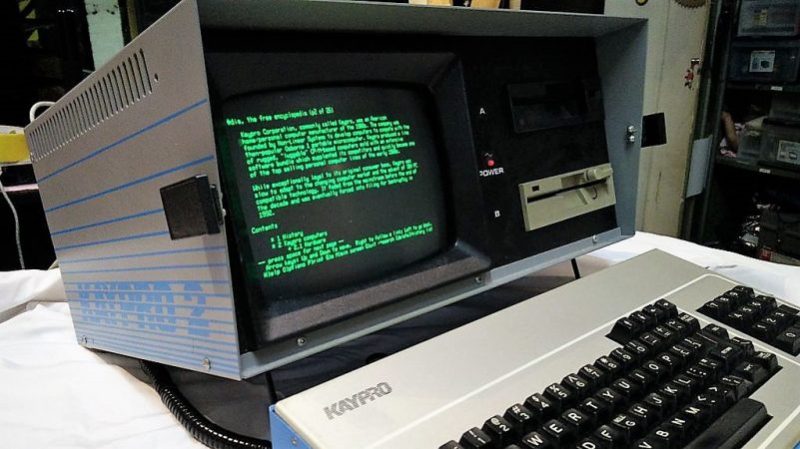These days, a good proxy for hacking prowess is getting Doom playable on the oldest piece of hardware imaginable. While we respect and applaud these efforts, perhaps the bar should be set a bit higher. Like orbital mechanics on an early 80s Kaypro, perhaps?
At least that’s the hurdle [Chris Fenton] set for himself as a fun project for his spare time with his Kaypro 2/84, a vintage Z80 clocking in at a screaming 4 MHz and 64-kB of RAM. With its built-in 80×25, 9″ green phosphor CRT monitor and flip-top keyboard, the Kaypro fit into that loveable luggable category of machines and predated IBM’s and Apple’s market dominance by a few years. The CP/M operating system has actually aged pretty well — but well enough to port [Chris]’ Deep Dish Nine, a graphical game written for the Arduboy that uses Kerbal-like orbital mechanics skills to deliver interplanetary pizzas? In the first instance, no — the game, ported to Turbo Pascal, only managed fractional frames per second, rendering it unplayable. But with some very clever coding, [Chris] was able to improve refresh rates 10-fold. The optimization road not taken includes hardware hacks, like overclocking the Z80 or even replacing it with an FPGA and emulator, but that’s hardly keeping with the spirit of the thing.
It’s always great to see vintage machines pushing the envelope. A great place to see them is one of the Vintage Computer Fairs, like the upcoming VCF Southeast in Georgia. We were at the one diagonally across the country a few weeks back, and they’re well worth the trip.















Let us not forget the one coming up in May…….
I think getting doom to run on that thing would be a lot tougher than computing orbital mechanics, which is surprisingly simple. But I get what you mean. I guess you gotta render the graphics on top of that as well.
That’s such a cool piece of hardware. Not bad specs for its time, no? That beautiful case and keyboard. I want one.
Luggable in the same way the old B/W TVs were portable.
Closest to doom would probably be Monster Maze: https://www.youtube.com/watch?v=nKvd0zPfBE4
I have had an idea for a while of getting onto my local plasma/laser cutting people to get a couple cases like this made: 1 high spec gaming PC
1 small S100 system
1 IBM PC compatible
1 Mac/Amiga compatible
and a few spares
Same casing for all, but different paintjobs on the outside
I had a pair of them, and they are certainly my favorite machine from that era. The slow-decay green phosphor was really easy on the eyes.
But, can it play Crysis?
B^)
Oh I so coveted one and an Osborne and the luggable compaq
I have a luggable,
it is a Nicolet Logic Analyzer that runs CP/M from floppy.
I did have two Compaq “Luggable” computers, butt gave away the DOS one.
Still have the CPM system tho. I guess I should Ebay it..
It’s very refreshing to be able to read the article instead of skipping through an insufferable video. More projects should be documented using this novel approach.
Really cool to read about someone doing programming on such old hardware.
Thanks! This was a fun project to finally cross off my really long to-do list!
I suspect if you actually build the Kraypro then you’d have a decent shot at winning the Hackaday Prize.
I love my Osborne, The amber CRT is festive and warm.
Sounds like you have a lavishly larger-CRT Exec, the OCC1s have white or green
You’re going to bring out all the NostalgiaBots. The Kaypro IV was my first computer, followed by a TRS-80 model 100..
Darn tootin, from the days when we put the “hard” in hardware. :-p
I was just discussing on had.io the other day about the need for some kind of computer-testing algorithm that can be ported to lots of architectures, is/was historically useful, and can serve as a universal proof-of-concept that “I did the thing!”. Mining Bitcoin is trendy, but ultimately useless. “Can it run Doom?” only works for graphical systems – a useful porting benchmark on modern hardware, but a no-go for retro stuff. “Can it run Crysis” is just silly.
Password cracking, digits of Pi, Dhrystone / Whetstone benchmarks were some ideas we came up with. Orbital mechanics seems like a great addition to the list.